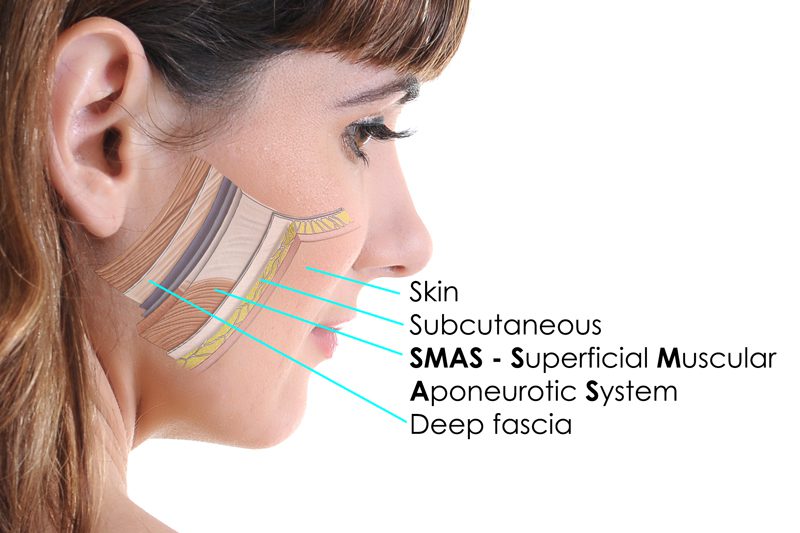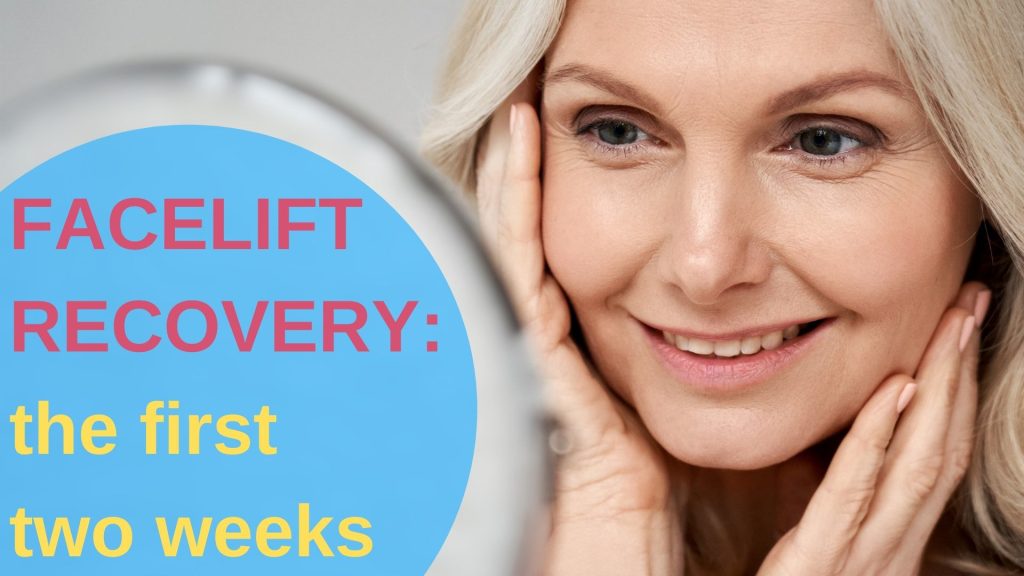There is something about committing to having your face operated on that may create anxiety and concern regarding a number of things. The unknown is unsettling! It can be exciting and nerve-racking at the same time when planning for your surgery, and what happens afterwards.

knowing what recovery looks like calms concerns
We will review what the first two weeks are like following a facelift. It will be full of what I will call “generalizations” understanding that there is a spectrum of things a patient can experience which is influenced by the surgical procedure, the patient’s general well-being, and how their body responds to a procedure such as a facelift.
An isolated facelift takes about 4 hours and if the eyes are added the procedure may last 5.5 hours and is performed in the Outpatient Surgery Center on campus at UT Southwestern in Dallas, serving patients from Fort Worth, Arlington, and beyond. While this seems long, we are fortunate to have a wonderful anesthesia team lead by Dr. Jayne Coleman. She and I have been working together for over 20 years and there is no one better at caring for our patients and their anesthesia than she is. We perform a procedure that is called a “High SMAS”procedure. This procedure allows you to get the best possible, natural result that will last you the longest.

diagram of SMAS skin layers
Once the facelift procedure has finished, we will take you to the recovery room where you will spend the next hour waking up. We place you in a dressing for the evening that looks like a giant “Q-tip” or extra-large football helmet. This helps support your face and neck and decrease our risk for developing fluid and/or blood underneath the skin. If you have had eyelid surgery, you will have some cold compresses or Swiss Eye Mask to keep the area cool and decrease swelling and bruising. You will experience some numbness, but most patients do not have pain. They relate tightness across the neck that is not suffocating in nature. We often keep a urinary catheter in overnight to prevent you from having to get up frequently the first night as you will be mobilizing fluid and need to go to the bathroom frequently. This comes out in the morning following your surgery.
You will spend the night in our Extended Care Unit, which has incredible nursing care to help me care for you the evening following your surgery. We will keep your head elevated and help you walk that evening. You will not experience a great deal of pain, just tightness. For this reason, many of our patients do not take any narcotic pain medicine. Xanax (Aprazolam) works really well for our patients, keeping them comfortable, taking away some of the anxiety related to the dressing. Walking is very important, and we will assist you in walking in the hallway a few times that first evening. I will check on you several times that first day and night to make sure you are comfortable and do not need anything. Staying the night over with complete care is pivotal for the first night while you recover. We will monitor your blood pressure and make sure you walk that first evening.
The next morning, I will remove your dressing and take a good look at everything. We will teach you how to empty your drains at home and place you in a Velcro support strap to help keep compression on your cheeks and neck to decrease your swelling and help the skin to conform to your deeper tissues. We prefer that you keep your head elevated and avoid flexing your neck. Some patients have found a soft collar helps remind them not to do that. At home, you will do much of the same thing. Walk several times a day and keep your head elevated. Ice really helps and I ask that you use it around your eyes and neck area 10 minutes most hours you are awake. I will let you shower on Day 2 following your surgery. Some patients wait until Day 3 or 4 when the drain tubes come out and I let it be their choice. There is nothing that you need to do at home to your incisions. Make sure you remember to walk- as it is good and fine for you to do so! I then see you at Day 6 or 7 in my Dallas or Frisco Clinic for most of your sutures to come out. Occasionally, I leave the sutures behind your ear for a few days longer. Once the sutures are out, we start you on a scar treatment where you are massaging your incisions with the scar cream twice daily.
It is unusual for facelift patients to get much swelling or bruising. We see both more commonly when the eyes are done simultaneously or when we inject fat concomitantly. Patients tend to retain a bit of swelling in their cheeks, under their chin and lower down on the neck. These are more palpable than visual.
Something to remember: Sodium consumption should be limited and you need to make sure to eat foods low in salt. Salt tends to cause you to swell and something to be cautious with following your surgery for the first 4-6 weeks. You will experience some numbness in the areas we operated on, particularly the lower face, neck and around the ears. This is completely normal and may take 3-4 months to completely resolve.
For patients undergoing an isolated facelift, most can go in public by 10-14 days with a bit of makeup. If the eyes are done, this may be delayed for a week. Lastly, if laser is performed it may be even longer.

realistic results can be achieved
Recovery following a facelift is manageable for most of our patients. They do not experience much discomfort with the procedure. Their appearance is not distorted, so they continue to look like themselves with sharper jawlines and necks. The results are so amazing to see! I hope this blog helps answer any questions you may have. If some remain, please do not hesitate to contact me online or call (214) 645-3112!

ready to refresh your face?



Leave a Reply